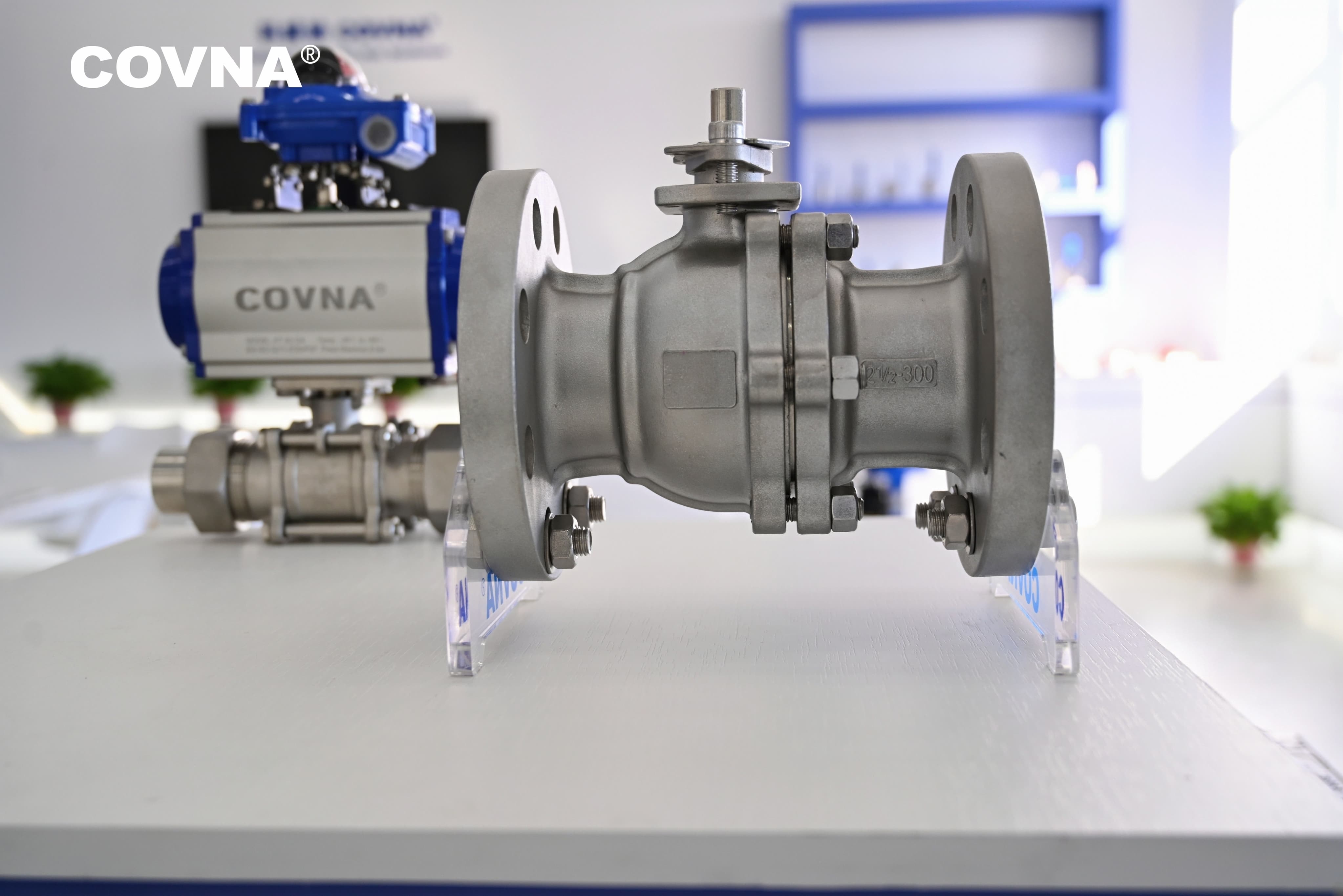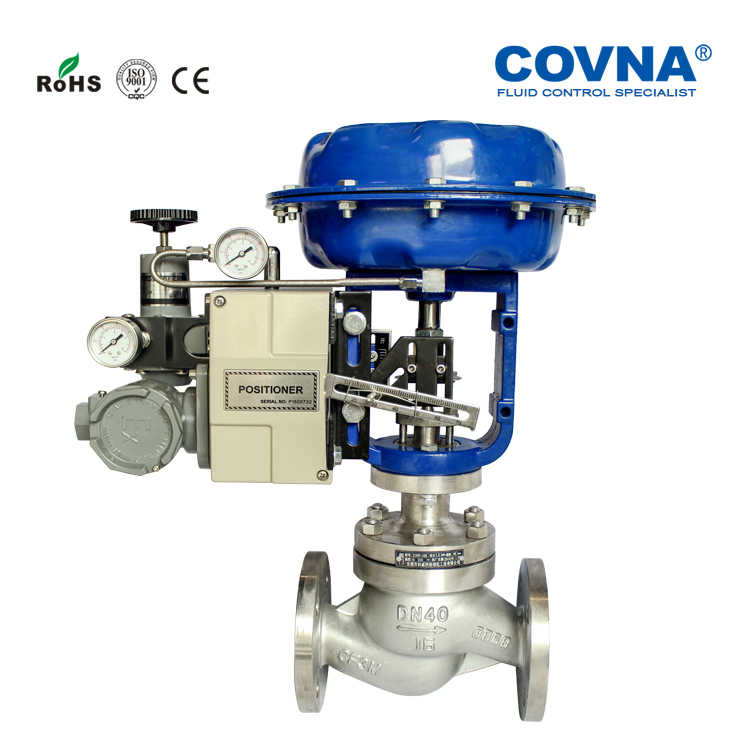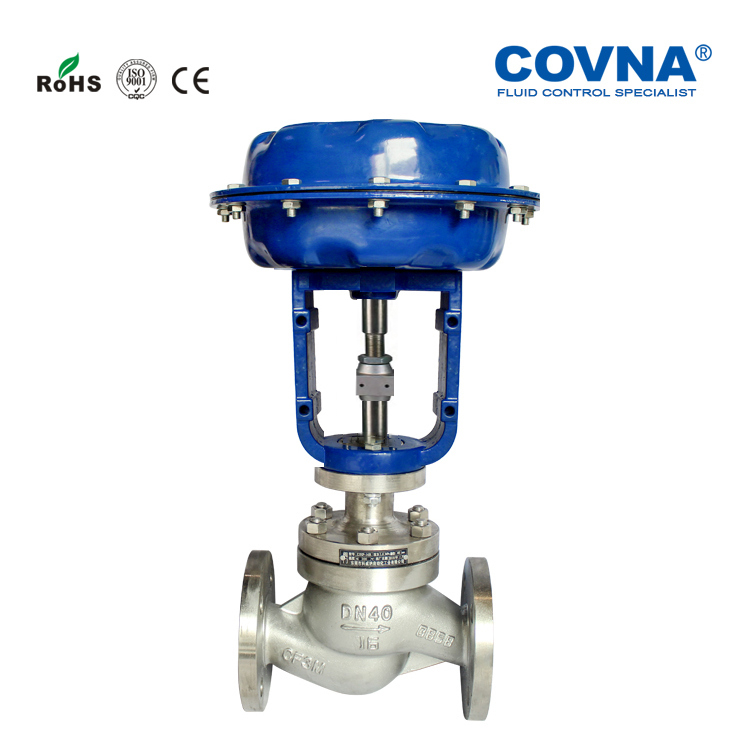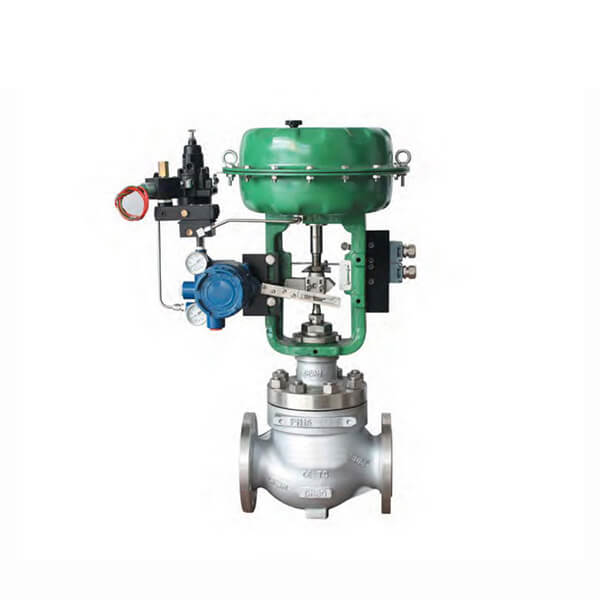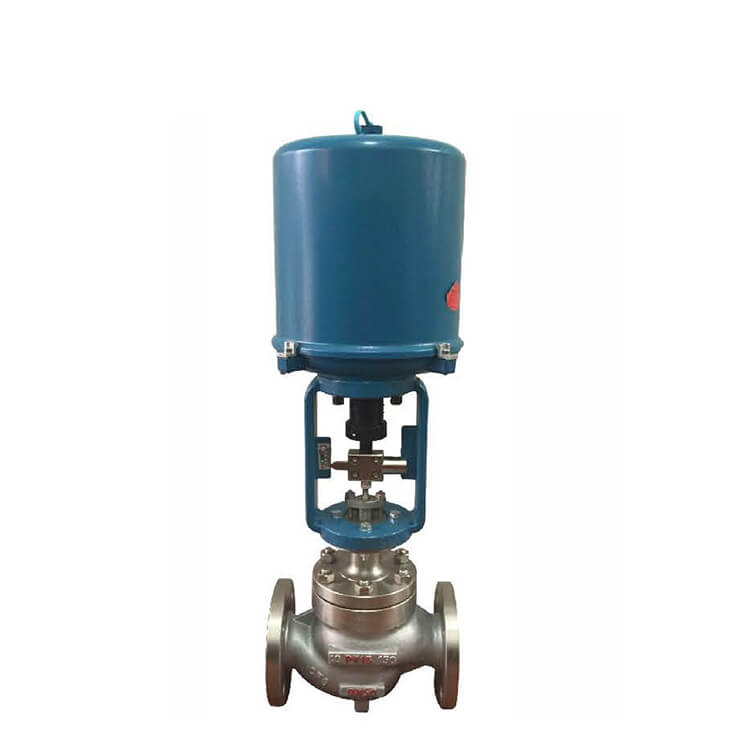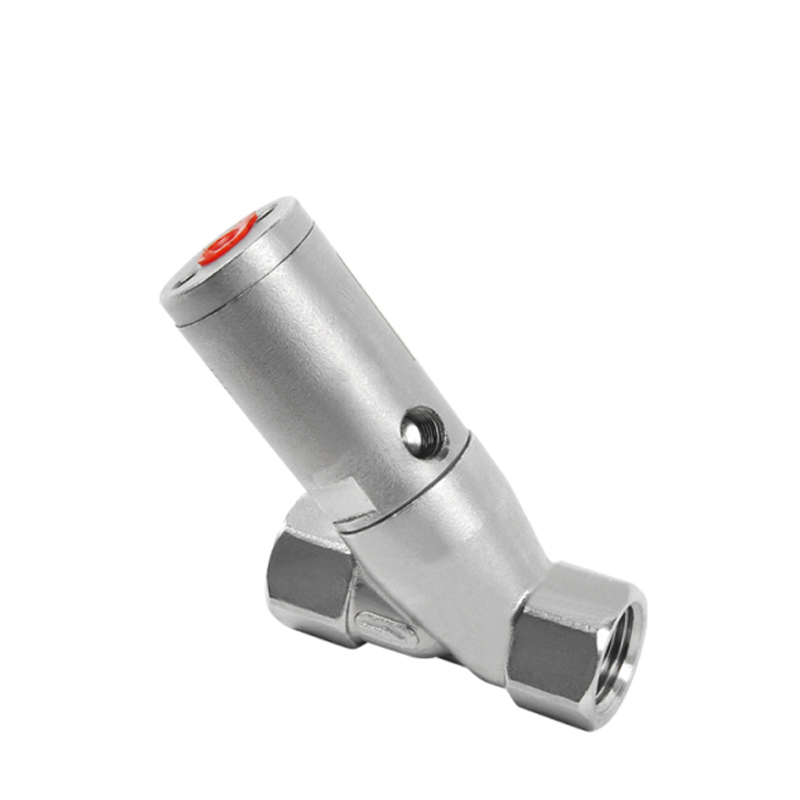Valvola di controllo di regolazione del diaframma pneumatico di Covna con display digitale
Vantaggi della valvola di regolazione del diaframma pneumatico con display digitale:
● È conveniente e sicuro da utilizzare, il che può aiutarti a risparmiare il costo dell'intero sistema e della manutenzione.
● Ha una struttura semplice e una grande coppia, a prova di esplosione con brevi tempi di attuazione, forze di azionamento ottimizzate e sigillatura stretta affidabile.
● Può evitare perfettamente problemi di attrito, corrosione ed emissioni.
● È a basso centro di gravità, elevata resistenza alle vibrazioni e facile da installare.
● Semplice da controllare, risposta rapida e sicurezza intrinseca, non è necessario adottare ulteriori misure a prova di esplosione.
● Canali fluidi in una flusso a forma di S, perdita di goccia di pressione ridotta flusso grande, ampio intervallo di regolazione, flusso elevato di precisione.
Ricevendo l'uscita della pressione del segnale di controllo mediante i segnali elettrici standard del regolatore (tramite il posizionatore dell'aria elettrica o il convertitore all'aria elettrica), l'apertura della valvola viene modificata, in modo da modificare il flusso del mezzo per essere regolato e quindi consentire ai parametri come il flusso, la pressione, la temperatura e il livello della temperatura. Di conseguenza, si ottiene l'automazione del processo di produzione.
Dopo che il segnale di pressione pneumatico estraneo viene inserito nella camera del diaframma, agirà sul diaframma per produrre spinta. La spinta li comprime il pacchetto di molla e sposta l'asta di spinta, che spinge il mandrino per aprire (chiudi) del clack della valvola fino a quando il bilanciamento non viene raggiunto tra la spinta e la reazione del pacco a molla compresso e il clack è in una posizione stabile della corsa. Si conclude dal principio di cui sopra. Esiste una relazione proporzionale definita tra il clack e il segnale di pressione di ingresso.




